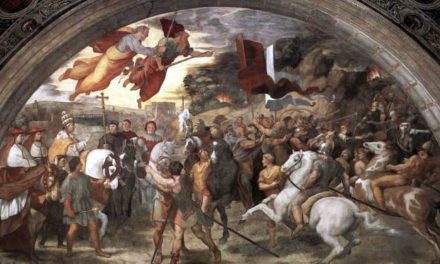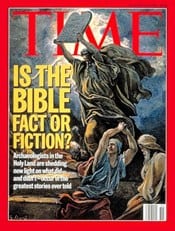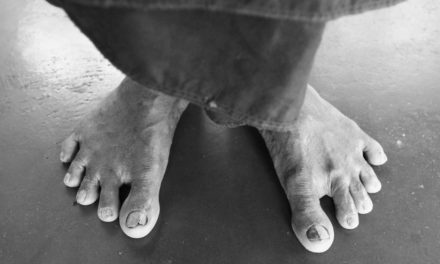Although it surely would have grieved him had he lived to see it, Martin Luther’s legacy in the years after his death a Century of war. This war didn’t only pit Catholics against Protestants. Various factions among the Protestants warred with each other. If the Reformers hoped to purify the Church of both theological error and political corruption, they may have succeeded in the first endeavor but failed miserably in the second. Those who want to use religion for personal ends don’t care what face the mask bears, so long as it gets the job done. Some of the more devastating wars included the French wars of religion, the Dutch revolt against Philip II of Spain, the attempted invasion of England by the Spanish Armada, the 30 Years War in Germany, and the Puritan revolution in England.
The 17th C was a time of theological and political entrenchment. European Christendom was now divided into four groups: Roman Catholic, Lutheran, Reformed, and the Anabaptists. The first three became officially associated with regions and their governments, while Anabaptists, after their disastrous failure at Munster, learned their lesson and sought to live out their faith independently of entanglements with civil authority. During the 17th C, Catholics, Lutherans, and Reformed developed impenetrable confessional bulwarks against one another.
As we saw in a previous episode, Catholic orthodoxy achieved its definitive shape with the Council of Trent in the mid-16th C. The Jesuits played a major role at Trent, especially in answering the challenge presented by Luther’s view on justification and grace. The Council affirmed the importance of the sacraments and the Roman church’s theological position on the Eucharist. At Trent, the Jesuits affirmed the importance Thomism, that is, the work of Thomas Aquinas, in setting doctrine. The triumph of Thomism at Trent set the future trajectory of Catholic theology.
In the last episode, we looked at the rise of Protestant Scholasticism in post-reformation Europe. While Protestant orthodoxy is concerned with correct theological content, Protestant Scholasticism had more to do with methodology.
From the mid-16th thru 17th C, Protestant orthodoxy clarified, codified, and defended the work of the early Reformers. Then, after the careers of the next generation of Reformers, it’s convenient to identify three phases orthodoxy moved through. Early orthodoxy runs from the mid-16th to mid-17th C. It was a time when Lutheran and Reformed groups developed their Confessions. High orthodoxy goes from the mid- to late 17th C. This was a time of conflict when the Confessions hammered out earlier were used as a litmus test of faith and formed battlelines to fight over. Late orthodoxy covers the 18th C, when the people of Europe began to ask why, if Protestant confessions were true, rather than leading to the Peace the Gospel promised, they lead instead to war, death, and widespread misery.
In truth, people had been asking that question for a lot longer than that; ever since the Church and State became pals back in the 4th C. But it wasn’t till the 18th they felt the freedom to voice their concerns publicly without the certainty they’d be set on by the authorities.
As Protestants and Catholics identified their differing theological positions, they became increasingly mindful of their methodology in refining their Confessions. Each appealed to the intellectual high ground, claiming a superior method for defining terms and reasoning. This was the age when there was a return by Christian theologians to Aristotelian logic.
Once the Council of Trent concluded and the Roman Church fixed its position, the opportunity for theological dialogue between Protestants and Catholics came to a firm end. After that it was simply up to the various major groups to fine tune their Confessions, then fire salvos at any and everyone who differed. It was the Era of Polemics; of diatribes and discourses disparaging those who dared to disagree.
In a previous episode we dealt with the career of Jacob Hermanzoon; AKA Jacobus Arminius. Arminius rejected the Calvinism promulgated by Calvin’s protégé Theodore Beza. Arminius’ followers developed what they called the Remonstrance, a five-part summary of what they understood Arminius’ positions to be on key issues of Reformed Theology. A theological and, wouldn’t you just know it, political controversy ensued that was addressed at the Synod of Dort. The Synod declared Arminius a heretic, the Remonstrance in error, and the five-petals of the Calvinist Tulip were framed in response to the five-points of the Remonstrance. A few Arminianist leaders were either executed or jailed while some two-hundred pastors were removed and replaced with Dort-aligned ministers. Despite this, the Arminianist-position endured and continued to hold sway over the conscience of many.
A couple decades after the Synod of Dort, another controversy surfaced among Reformed churches in France. It centered on the work of the brilliant theologian Moses Amyraut, professor at the then famous School of Samur. Amyraut took issue with one of the articles of the Canons of Dort, the doctrine of limited atonement. He argued for unlimited atonement, believing that Christ’s atonement was sufficient for all humanity, but efficient only for the elect. His view is sometimes known as “Hypothetical Universalism” far more commonly as four-point Calvinism.
In A Short Treatise on Predestination published in 1634, Amyraut proposed that God fore-ordained a universal salvation through the sacrifice of Christ for all but that salvation wouldn’t be effectual unless appropriated by personal faith.
Amyraut’s modification of Calvinism came to be labeled as Amyraldism and led to recurring charges of heresy. Amyraut was exonerated, yet opposition endured in many churches of France, Holland, and Switzerland.
Sadly, after Luther’s death, the movement that bore his name fell into disarray and in-fighting. Lutherans broke into 2 main camps. Those who claimed to stay strictly loyal to Martin, and those who followed his cheif assistant, Philip Melancthon. They remained at something of a theological stalemate until the Formula of Concord in 1577, the definitive statement of Lutheran orthodoxy. Much of the destruction of the Thirty-Years War took place on German soil. Agriculture collapsed, famine spread, and universities closed. By the end the war, there were at least 8 million fewer people in Germany.
The Peace of Westphalia made room for Catholics, Lutherans, and Calvinists, depending on the religious leaning of the ruler. Weary of bloodshed, the three communions withdrew behind polemic-firewalls. Instead of firing cannonballs at each other, they lobbed theological word-bombs.
Pietism was a kind of war-weary reaction to the new scholasticism the theology of Lutheranism settled into. Pietists viewed what was happening in the retrenchment in Lutheran theology as a “deadening orthodoxy” that stole the life out of faith. Pietism didn’t set out to establish a new church. It simply sought a renewal that would turn dead orthodoxy in a living faith. Pietism saw itself as an Ecclesiola in Ecclesia, that is, “a little church within the larger church.”
It seems Pietism has been loaded with a lot of emotional baggage and negative connotation of late. Critics today regard Pietists as aiming to privatize their faith, to withdraw from the public square and divorce faith from the wider world. To use Jesus’ term, they see pietism as an attempt to hide you light under a basket, to put the city, not just in a valley, but in a cave. While some Pietists did privatize faith, that wasn’t the goal of Pietism.
It was a movement that simply sought to keep piety, the practice of godliness, as a vital and integral part of daily life. It was understood that godliness wasn’t the result of rules and regulations but of a genuine relationship with God. Pietism was a reaction to the dead orthodoxy of the State-approved Lutheranism of the early 17th C.
This is not to say scholastic theologians were all lifeless profs. Some of them produced moving hymns and stirring devotional writings. But, if we’re honest, we’d have to say the practical faith of a large portion of Protestant scholastics had indeed become moribund.
Philipp Jakob Spener is known as the “Father of German Pietism.” Born at Rappoltsweiler in 1635, Spener was raised by his godmother and her chaplain, Joachim Stoll who became Spener’s mentor. Stoll introduced him to writings of the English Puritans.
Spener went on to study theology at Strasbourg, where his main professor was Johann Dannhauer, a leading Lutheran theologian of 17th C. Dannhauer deeply inspired the young Spener.
When he entered his first pastorate in Frankfurt in 1666, Spener was convinced of the necessity of a reformation within Lutheranism. His sermons emphasized the necessity for a lively faith and holiness in daily life. His most significant innovation was the establishment in 1670 of what today we’d call small groups. These were gatherings of about a dozen church members in homes to discuss sermons, devotional reading, and mutual edification.
In 1675, Spener was asked to write a preface for a collection of sermons by Johann Arndt. The result was the famous Pia Desideria (= Pious Wishes), which became an introduction to German Pietism.
While this is a bit more detailed than our usual fare here on CS, I thought it might be interesting to hear the main points Spener made in the Pious Wishes.
He enumerates 6 things as important for the Church to embrace. . .
1) He called for “a more extensive use of the Word of God.” To that end, Spener advocated small groups to encourage greater study of the Bible.
(2) He urged a renewed focus on the role of the laity in Christian ministry.
(3) He placed an emphasis on the connection between doctrine and living.
(4) He counseled restraint and charity in theological disputes.
(5) He urged reform in the education of ministers. They ought to be trained in piety and devotion as well as academics.
(6) He said preaching ought to edify and be understandable by common folk, rather than sermons being technical discourses only an educated few could understand.
Spener’s Pious Wishes won him many followers, but aroused strong opposition among Lutheran theologians and not a few fellow pastors. Despite criticism, the movement grew rapidly.
Pietism had the good fortune of seeing Spener succeeded by August Francke. Francke was born in Lübeck and graduated from the University of Leipzig, where he excelled in biblical languages. While a student in 1687, he experienced a dramatic and emotionally charged conversion, which he described as the “great change.” Francke’s conversion became something of a model for Pietism. In order for conversion to be considered legitumate, it needed to be preceded by a profound conviction of sin that’s a datable event to which one can point for confirmation.
Returning to Leipzig, Francke led a revival in the college that spilled over into the town. It provoked conflict, and Francke was expelled from the city. At this point the term “Pietist” was first coined by a detractor, Joachim Feller, professor of rhetoric at the university. A Pietist, Feller asserted, was “someone who studies God’s Word and, in his own opinion, also leads a holy life.”
By this time, Francke had become closely associated with Spener. It was due to Spener’s influence Francke was appointed to the chair of Greek and Oriental languages at the new University of Halle. Francke emerged as the natural successor to Spener. From his position at Halle he exercised enormous influence in preparing a generation of Pietist pastors and missionaries all over the world. Under his guidance, the university showed what Pietism could mean when put into practice. In rapid succession, Francke opened a school for poor children, an orphanage, a home for indigent widows, an institute for the training of teachers, a medical clinic, a home for street beggars, a publishing house for Christian literature, and the famous Paedagogium, a preparatory school for upper-class students.
For 36 years his energetic endeavors established Halle as the center of German Pietism. Together, Spener and Francke created a true Ecclesiola in ecclesia.
Spener and Francke inspired other groups of Pietism. Count Nikolas von Zinzendorf, was Spener’s godson and Francke’s pupil. Zinzendorf organized refugees from Moravia on his estate and later shepherded them in reviving the Bohemian Unity of the Brethren.
The Moravians carried their concern for personal piety literally around the world. This was of huge significance for English Christianity when John Wesley found himself in their company during his voyage to Georgia in 1735. What he witnessed in their behavior and heard in their faith after returning to England led to his own spiritual awakening.





